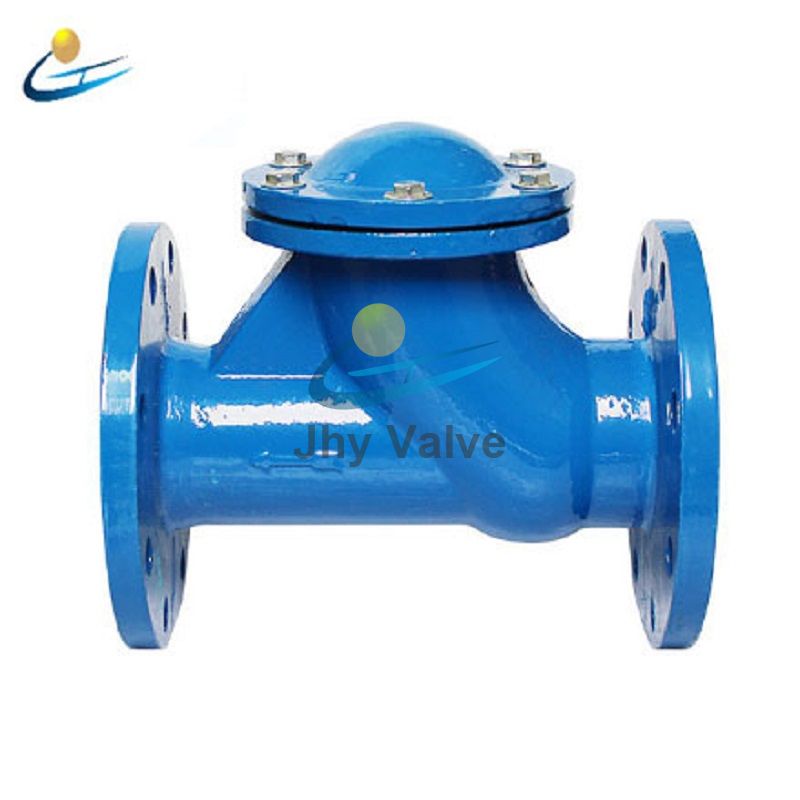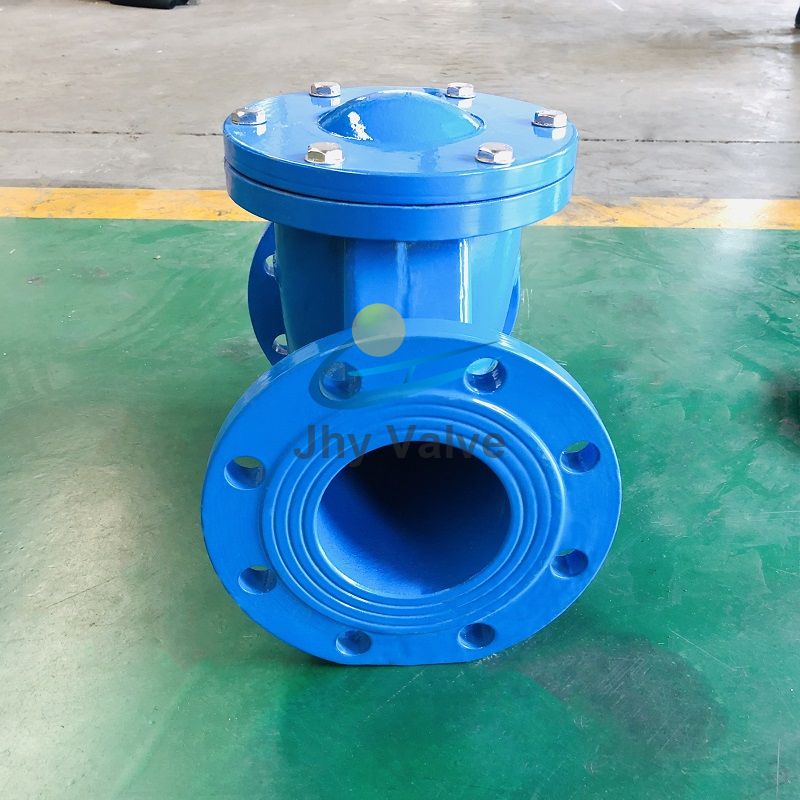Ball Check Valve Description
JHY ball check valve is a specific type of ball check valve manufactured by the JHY Valve Co., Ltd. It is designed to provide reliable and efficient backflow prevention in various industries and applications.
The JHY ball check valve features a robust construction and high-quality materials to ensure durability and longevity. The valve body is typically made of materials such as stainless steel, cast steel, or ductile iron, depending on the specific application requirements and compatibility with the media being handled.
The valve mechanism consists of a spherical ball that functions as the valve disk. This ball is precision-engineered and made of materials such as stainless steel, brass, or other corrosion-resistant alloys. It is designed to provide a positive seal against the valve seat, preventing backflow when the flow stops or reverses.
The JHY ball check valve is available in various sizes, pressure ratings, and end connections to suit different piping systems. It offers a full-flow design, allowing for unrestricted flow and minimal pressure drop when the valve is in the open position. The valve can be installed vertically or horizontally, depending on the specific installation requirements.
Depending on the model and customer preferences, the JHY ball check valve may be equipped with additional features like a spring-loaded mechanism for improved closure performance and prevention of water hammer effect.
The JHY ball check valve is widely used in industries such as water supply and distribution, wastewater treatment, petrochemical, oil and gas, power generation, and more. It provides reliable backflow prevention, ensures efficient flow control, and helps protect downstream equipment from potential damage.
Overall, the JHY ball check valve is designed to meet industry standards and deliver dependable performance in critical applications, offering reliability, durability, and effective backflow prevention solutions.


| Customized Support |
OEM, ODM |
|---|
| Place of Origin |
Hebei, China |
| Warranty |
2 years |
| Brand Name |
JHY |
| Temperature of Media |
Medium Temperature |
| Port Size |
2"-24" |
| Standard or Nonstandard |
Standard |
| Material |
Ductile Iron |
| Usage |
Water, Oil, Gas |
| Product Name |
Check Valve |
| Certificate |
ISO, CE, SGS, TUV |
| Pressure |
PN16 |
| Packing |
Standard Packing |
Ball Check Valve Features:
-
Ball Design: As the name suggests, these valves use a spherical ball as the closing and checking mechanism. The ball is typically made of materials such as stainless steel, brass, or plastic, depending on the application requirements.
-
Compact Size: Ball Check Valves are generally compact and lightweight, making them easy to install and fit into tight spaces.
-
Spring-Loaded or Gravity-Assisted: Depending on the design, Ball Check Valves can be spring-loaded or gravity-assisted. Spring-loaded valves use a spring to ensure prompt closure and prevent any water hammer effects. Gravity-assisted valves rely on the weight of the ball to facilitate closure.
-
Full Flow Capacity: Ball Check Valves offer a full flow design, allowing for unrestricted flow through the valve when in the open position. This ensures efficient flow rates and minimal pressure drop.
-
Easy Installation: These valves typically have threaded or flanged connections, making them easy to install in pipelines or plumbing systems.
-
Optional Features: Some Ball Check Valves may include additional features such as built-in strainers or filters to prevent debris or particles from entering the valve and causing clogging.
-
Wide Range of Applications: Ball Check Valves are suitable for various applications, including water supply systems, wastewater treatment plants, irrigation systems, industrial processes, and more.Gate Valve, Butterfly Valve, Check Valve Supplier (jhyvalve.com)
Ball Check Valve Advantages
-
Reliability: Ball Check Valves are known for their reliable performance, ensuring effective flow control and preventing backflow.
-
Low pressure drop: The design of Ball Check Valves typically results in minimal pressure drop across the valve, allowing for efficient flow without significant energy loss.
-
Versatility: Ball Check Valves can be used in a wide range of applications and industries, including water treatment, plumbing, oil and gas, chemical, and more.
-
Maintenance-free: Due to their simple design and fewer moving parts, Ball Check Valves require minimal maintenance and have a longer service life compared to other types of check valves.
-
Fast response time: The ball inside the valve moves quickly in response to flow changes, making Ball Check Valves suitable for applications where rapid shut-off or opening is required.
-
Corrosion resistance: Many Ball Check Valves are made from corrosion-resistant materials such as stainless steel or PVC, ensuring their durability and suitability for various environments.
Ball Check Valve Working Principle
The working principle of a Ball Check Valve is fairly straightforward. When fluid or gas flows in the desired direction, the pressure pushes the spherical ball away from the valve seat, creating an open passage for the flow. This allows the fluid or gas to pass through freely without any obstruction. However, when there is a reverse flow or backflow, the pressure from the opposite direction forces the ball against the valve seat. This effectively blocks the passage, preventing the fluid or gas from flowing backward. Essentially, the ball acts as a check to ensure that the flow can only go in one direction. This working principle helps to maintain the desired flow direction and prevent any unwanted backflow.
Ball Check Valve Design
-
Body: The body serves as the main housing of the ball check valve and is usually made of materials such as cast iron, stainless steel, or PVC. It features pipe connections for integration into the pipeline system.
-
Ball (Valve Core): The ball, also known as the valve core, is a spherical component typically made of materials like stainless steel, brass, or plastic. It acts as the closing and checking mechanism of the valve, resting against the seat to prevent backflow and allowing flow in the desired direction when lifted.
-
Seat: The seat is located inside the body and provides a sealing surface for the ball. It is usually made from a wear-resistant material to ensure a tight seal and minimize the possibility of leakage.
-
Spring (Optional): Some ball check valves may include a spring mechanism to provide additional closing force and alleviate the impact during the valve closure. The spring is typically attached to the valve core, enabling prompt closure.
It’s important to note that there may be variations in design among different models and manufacturers of ball check valves. However, these components generally form the basis of the common design of a ball check valve.








